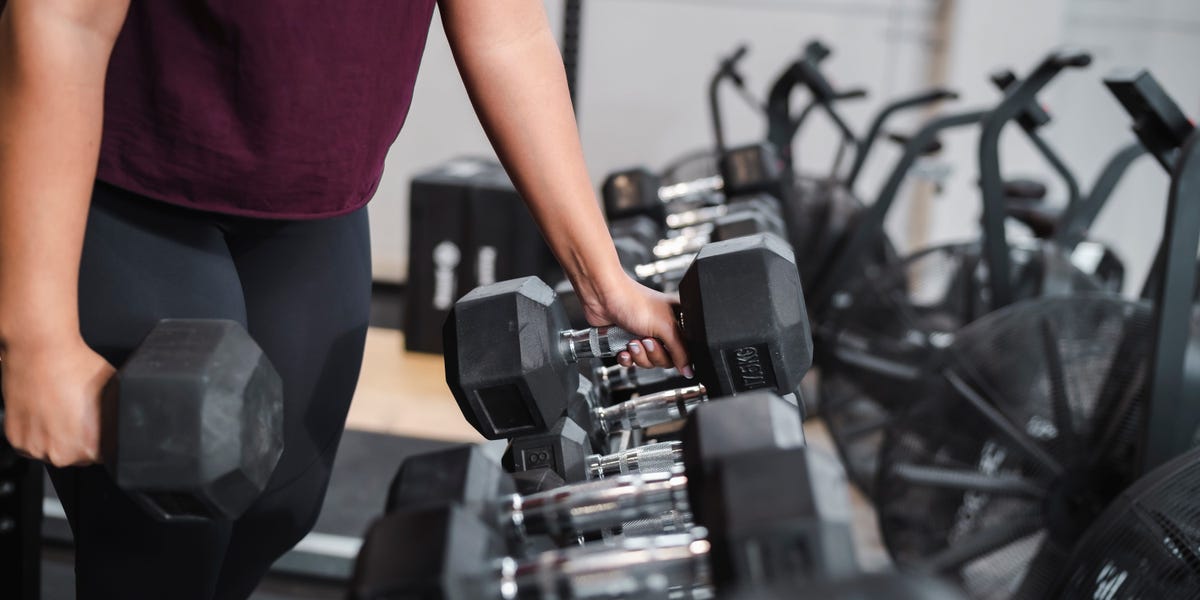- Before I started exercising, I was intimidated by the weightlifting area at the gym.
- I decided to get ready to work out and spent hours reading and practicing movements.
- Now I’m a weightlifter and teach group fitness classes.
Before joining a gym, I started studying. I was so nervous about using the gym section that I always thought was mainly for men, the weight lifting area and I wanted to be prepared.
I bought a book on strength training and spent hours reading and highlighting entire pages. I watched YouTube videos on how to do a safe squat and practiced in my kitchen with a broomstick. Later, I realized I was doing what I now believe is essential to starting exercise: I adopted the mindset of someone who exercises and takes care of themselves, just planning to do it.
Preparing to change my behavior set me up for success
Strength training helped me recover from binge eating disorder, introduced me to a community that valued strength over thinness, and motivated me to become a spinning-focused group fitness instructor and enroll in my first weightlifting meet. But to get where I am, I had to spend a lot of time making a behavioral change. This is where the magic happens and it’s a step that many people skip.
The five stages of behavioral change are precontemplation, contemplation, preparation, action, and maintenance. If you’re thinking about stopping exercising a lot and adopting a regular exercise routine, you’re probably in the contemplation stage: you’re thinking about it, but haven’t started yet.
Here’s a one-week plan to get you ready to start exercising
Where people tend to slip up and give up on exercise altogether is jumping straight into the action stage without preparing. To avoid this, try following this one-week preparation plan:
Day 1
Think of a type of exercise that you believe in not only it could do, but also he would be to do. Ask yourself why this comes to mind and why you think you would be a good fit for this. Also consider what would be most pleasant and least pleasant about it.
Day 2
See photos and/or videos of people doing the exercise. Write down any questions you have, such as: “How are they doing that? What is that thing they are doing called? What muscles does it activate?” Stay curious.
Day 3
Ask yourself: what do I need to do to exercise? Any special clothing or equipment? Make a shopping list. Notice how, just like making a packing list gets you excited for vacation, this step can make you more excited to exercise.
Day 4
Find out when you can fit a workout into your schedule as it stands now. Don’t assume you’ll “make it work” and “find a time” and look at your calendar and set your workout time like you would at an appointment with a dentist or doctor.
Day 5
Think of something you would like to do while exercising that isn’t exercise. Maybe you listen to audiobooks, podcasts, or playlists. Maybe you check out the beautiful scenery on a running track. Imagine that you will prioritize carrying out the activity you enjoy, with exercise as a mere side effect.
6th
Pretend you’re going to exercise tomorrow, prepare everything and then don’t do it. I know it sounds weird, but if you include an imaginary fitness class in your schedule, pack your clothes, and fill your water bottle for the next morning and then don’t go, you’ll probably feel a little agitated that you prepared for nothing. That’s what we want, the feeling of disappointment at not being able to exercise. This is how people who like to exercise feel.
Day 7
Decide what you will do next. What concrete step will you take to exercise at some point? Maybe you buy the items you need, make a reservation for a fitness class, make a plan to go for a run with a friend, or do more specific research to prepare for your first day in the weight room.
This planning also provides what is called the “nonspecific response” (also known as the placebo effect) of doing something positive and productive for yourself. Some doctors have said that when people take antidepressants, they benefit not only from the chemical effects of the drug, but also from the nonspecific response of the daily reminder that they are supporting their mental health.
Preparing to exercise before you exercise is the same thing: you get into the mindset of an exerciser (and go through all the necessary logistics) and start to feel better and more motivated by exercising, all without touching a single dumbbell or take a single. stage.
#start #working #exercised #weightlifter #spinning #instructor
Image Source : www.insider.com

